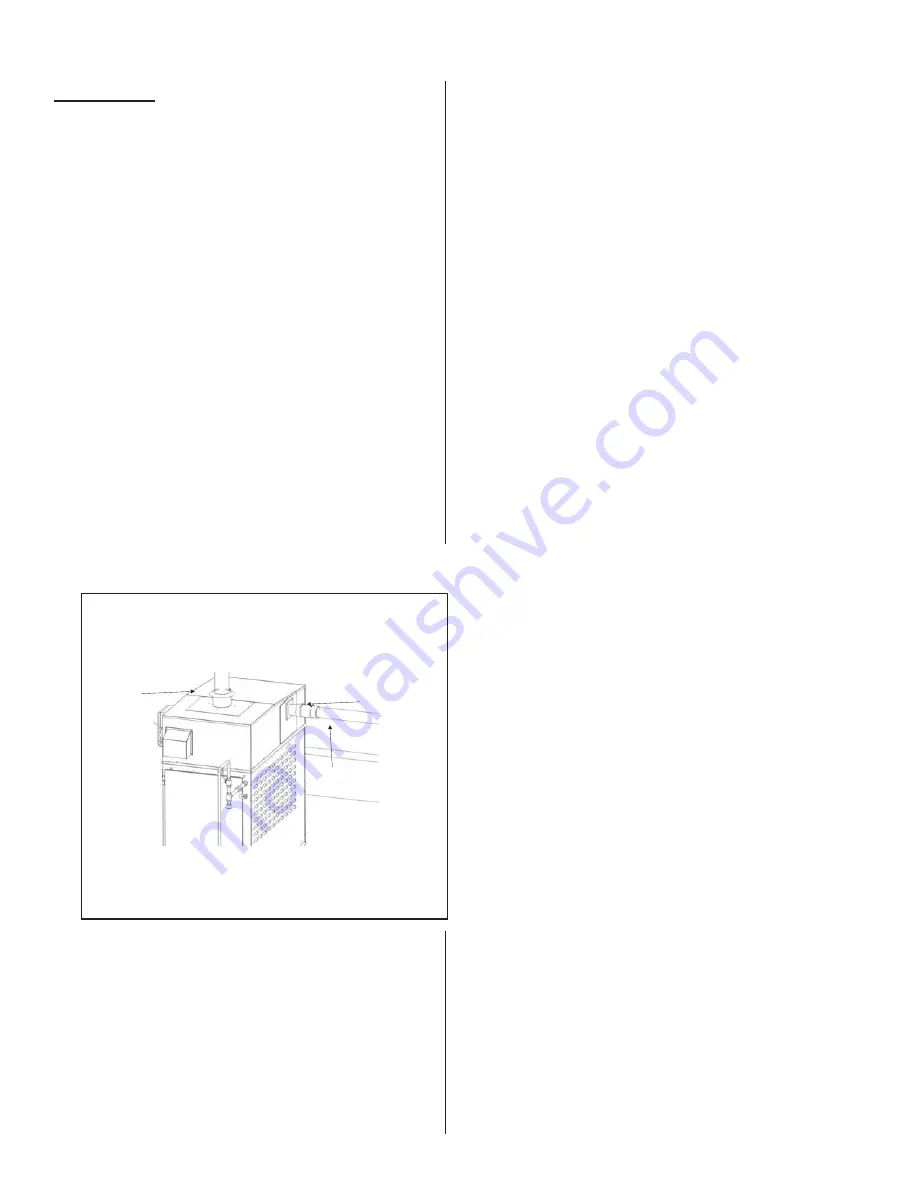
STEAM LINES
·
The steam outlet connection is located at the
back of the GS Outdoor unit. Steam hose(s) and
clamps are supplied with the unit and are
intended to provide a flexible coupling outside of
the unit to the building steam lines. See Figure
#23.
·
GS Outdoor models can develop steam
pressures up to 12”w.c. to overcome duct and
steam line pressures. Pressures above 12”w.c.
will cause steam to exit through the drain line.
·
Steam lines can be routed to an air handler on
the roof or pipe chased (external to the unit)
through the rooftop to enter the building.
·
All steam lines must be insulated to reduce
losses.
·
For steam line installation guidelines, consult the
distribution system installation manual (Steam
Distributor Installation Manual Form #XX-231 and
SAM-e Short Absorption Manifold Form
#XX-249).
PRINCIPLES OF OPERATION
Combustion
The combustion system is based on a fully
modulating forced draft combustion air blower(s), a
negative pressure regulated gas valve, and a 100%
premix burner. On a call for humidity, the combustion
air blower(s) starts and creates a negative pressure(s)
across an orifice located at the air inlet. The blower is
energized to purge the system, then the hot surface
ignitor is activated. During this time the electronic
ignition module does a diagnostic check of safety
systems including the air proving switch which senses
the negative pressure at the air inlet orifice. After the
function of the safety systems has been verified, the
gas valve(s) will open and the gas/air mixture is ignited
by the hot surface ignitor. If a flame is sensed by the
flame sensor, the gas valve(s) remains open and
combustion continues. If a flame is not sensed, the
above sequence is repeated to a maximum of three
times after which the ignition module will lock out. The
gas valve(s) maintains a constant ratio air to gas
independent of blower speed or external conditions.
This air and fuel is thoroughly mixed in the blower(s)
and then forced through the burner ports where
ignition occurs.
Hot products of combustion are forced through a
baffle inside the heat exchanger and then vented
outside. The heat exchanger has a large flat surface
to minimize scale build-up and promote scale
shedding to the bottom of the tank. This self-cleaning
action helps to maintain the efficiency of the heat
exchanger while the smooth surfaces allow for easy
cleaning when necessary.
The GS 100 has a single removable combustion
chamber/heat exchanger. The combustion system is
duplicated on larger units with multiple chambers
inside a common tank.
WATER MANAGEMENT
The GS Series of humidifiers is equipped with a
unique float chamber water level monitoring device.
Two magnetic floats (one is a backup) measure 5
different water levels in the humidifier for proper
operation. The float chamber and board are located
away from the boiling action to increase reading
accuracy and reduce mineral build-up since it is not in
the boiling water. The float chamber is connected to
the tank under the water level and above the water
level to ensure equalization of pressure between the
tank and float chamber. In addition, cooling water is
introduced in the float chamber to reduce scale
build-up. The unit also includes an internal 1” air gap
and a vacuum breaker to prevent siphoning effect.
- 22 -
Cuff hose and
clamps provided
Steam line
(Insulation
recommended)
BH Venting
Supplied
Figure #23
Steam Connection
Summary of Contents for GS 100
Page 76: ......
















































